At the exhibition “Only Together! Only forward! ”, dedicated to the war with Ukraine, mainly families with children: children climb on military equipment, adults read texts, look at trophies, compare uniforms: “This is theirs, and this is how ours are dressed. Well, ours will be better.” The Military Historical Museum of Artillery, where the exhibition opened in February, is under the jurisdiction of the Ministry of Defense.
Artifacts include an invitation to the “People’s Referendum” on May 11, 2014, the “Flower of War” sculpture in the form of a rose, made from a 23-mm cannon shell “found at the battlefields at the Donetsk airport”, the uniform of the deceased sniper of the “People’s Militia of the DPR”, a fragment of glass from the cafe "Separ" ("where on August 31, 2018, as a result of a terrorist act committed by the special services of Ukraine, the Head of the Donetsk People's Republic A.V. Zakharchenko died"). The most impressive part is the stands dedicated to Ukraine (or rather, “resurrected Nazism”). Above the fiery trident is written "It's time to fight, it's time to kill."
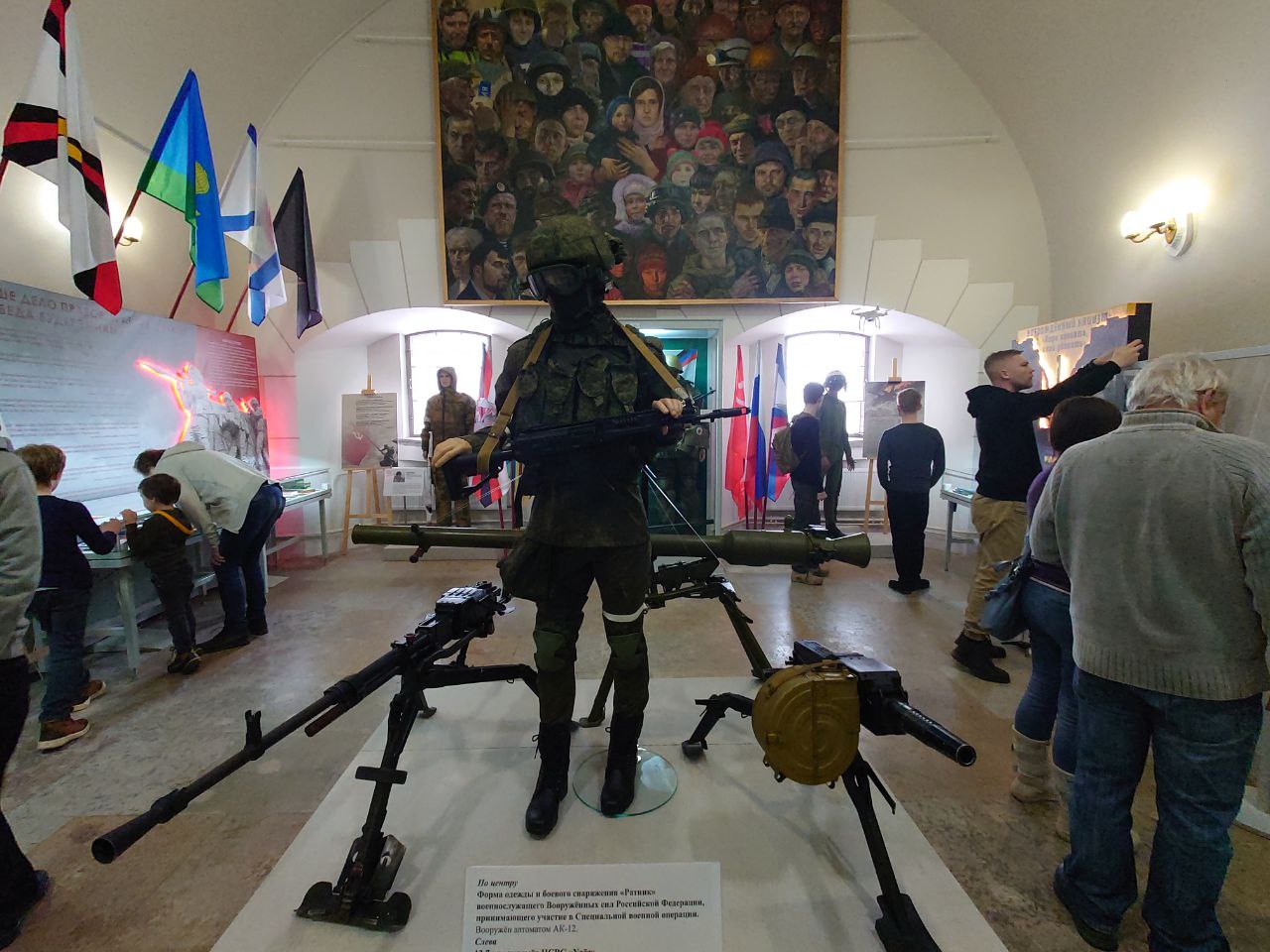

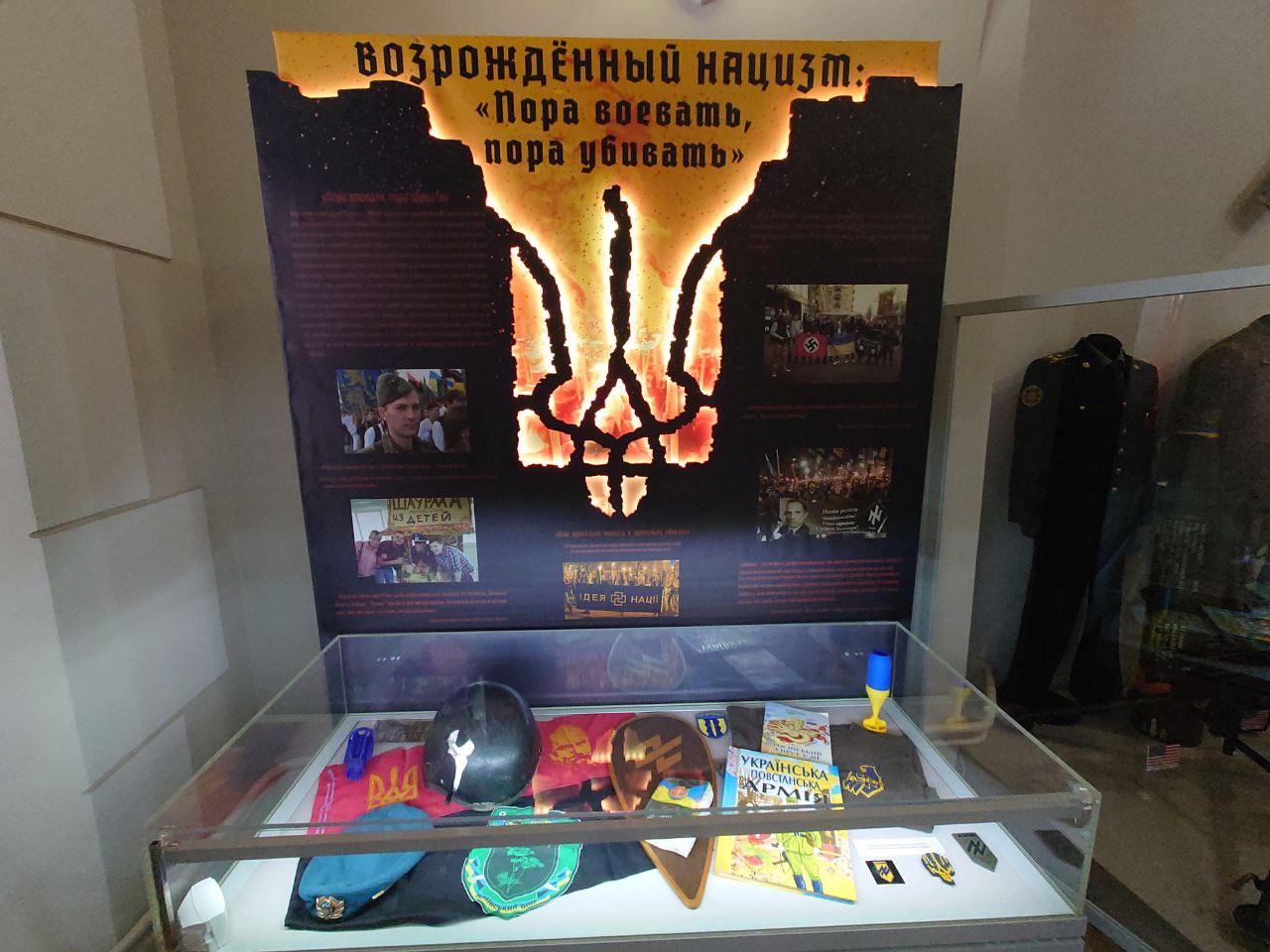
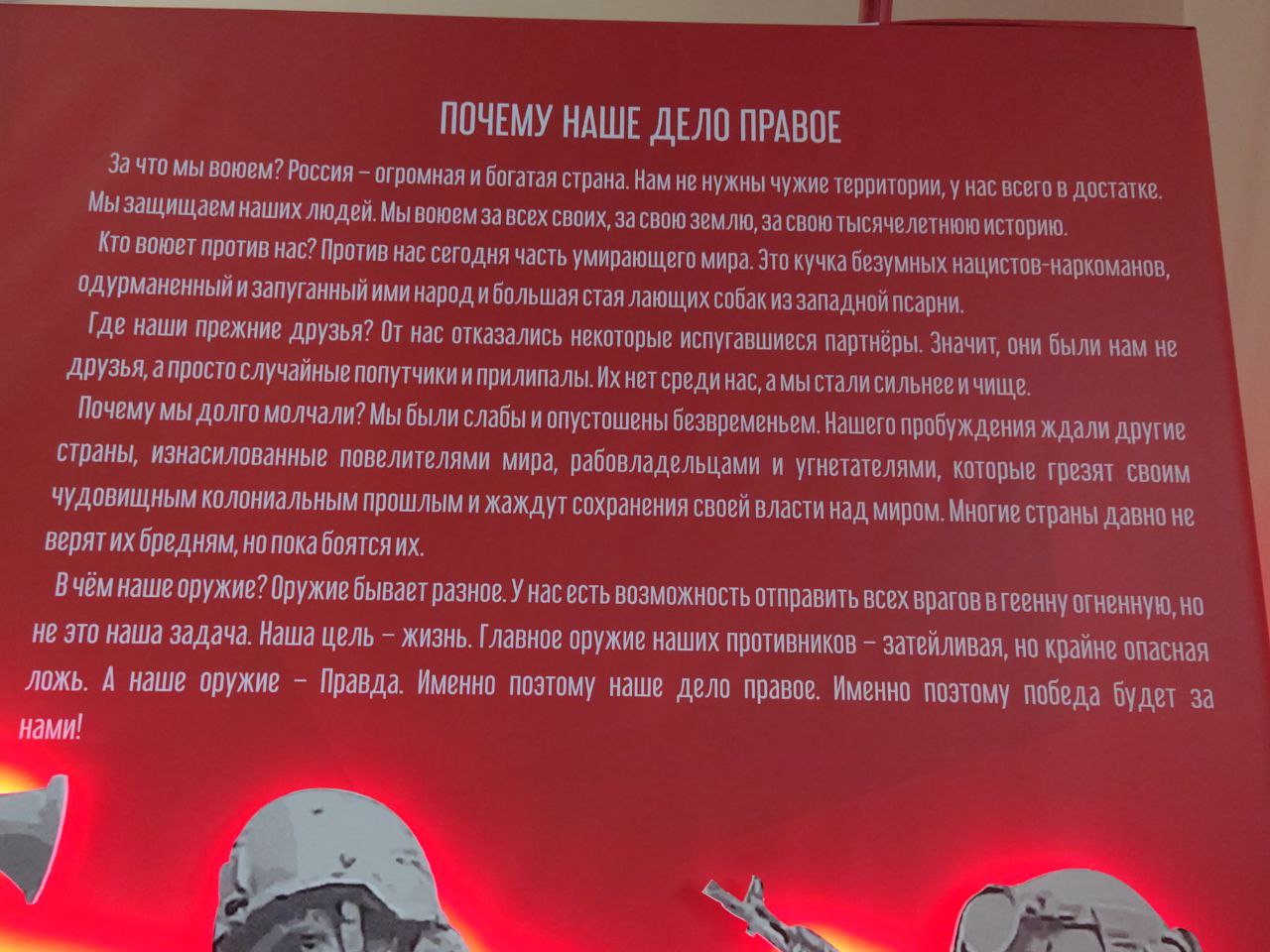
On the stand, decorated in black and red, there are quotes from Ukrainian and American politicians. Among them there is a fake , which is attributed to the Congressman of the Democratic Party Jamie Raskin in Runet: “Russia is an Orthodox country with traditional social values. That is why it must be destroyed, no matter what the cost to the United States." There is no evidence that Ruskin really said this.
Opposite the captured machine guns, grenade launchers and fragments of shells is a story about a Donetsk animator dressed as a polar bear, who, as follows from the text, was standing under the window and dancing to a song from Umka. The authors of the exposition see the polar bear as a “symbol of Donetsk's resilience”. Opposite the Ukrainian trident is the text of Dmitry Medvedev’s post “Why our cause is just”, where there is a veiled threat of the use of nuclear weapons (“We have the ability to send all enemies to fiery hell, but this is not our task”), as well as phrases like “a bunch of Nazis drug addicts" and "a large pack of barking dogs from a western kennel".
This is not the first "patriotic" project in St. Petersburg. On January 20, 2023, an exhibition of paintings by Alexei Chizhov "The New Order" dedicated to the "dark side of American globalization" opened at the PMC Wagner Center in St. Petersburg. The poster was decorated with figures in uniform with weapons and acid-green opium capsules (a reference to the opium wars).

It would seem, where is the PMC and where is the painting… What kind of bizarre union of a brush and a sledgehammer? In fact, art exhibitions play a prominent role in the formation of a “patriotic” narrative. Queues are traditionally lined up for exhibitions of realistic (and socialist realist) painting. The conservatism of the Russian viewer works for a certain reverence for painting as a traditional, “kind, eternal” art. This, of course, is about figurative painting, "understandable to the people." Together with the concerts of the Kino group, Cheburashka and the national hockey team in Soviet uniforms, “realistic” painting is part of a nostalgic attraction for domestic consumption.
Like "patriotic" cinema, there were similar exhibitions even before the full-scale invasion of Ukraine. Chizhov's "New Order" was shown at Erarta (a private museum of contemporary art in St. Petersburg) in 2018. Then the project had a more ornate liner: Chizhov was called "a creator capable of a strong statement", and a series of works – "the epic of a hybrid war." The artist himself then said that he was working with the image of some kind of dystopia. In January 2023, at the opening of the exhibition at the PMC Wagner Center, Chizhov already said that for him the series is “an act of support and solidarity with what the fighters of this company <Wagner PMC — The Insider> are doing at the front, protecting, liberating our Russian earth." He has been working on the series since 2015, writing one of his recent pieces “a year before the Americans fled Afghanistan.”
“PMC Wagner Center”, of course, is not a museum, but if in 2018 such projects were a glaring phenomenon, now the “New Order” is perhaps more relevant than anything else. It is all the more interesting that the exhibition in the hall on the first floor was closed ahead of schedule: initially the project was designed for a month – from January 20 to February 20, but already on February 10 the exhibition did not work. According to the reception of the business center, the exhibition was suspended for technical reasons. There are no plans to reopen, and there are no exhibitions in the building at all.
But even without the "New Order" there is no shortage of "patriotic" exhibitions in St. Petersburg. The Russian Museum shows " Pictures of military life ", in the Museum of the Academy of Arts – projects Donbass. Industrial Portrait " and " Images of Happiness ".
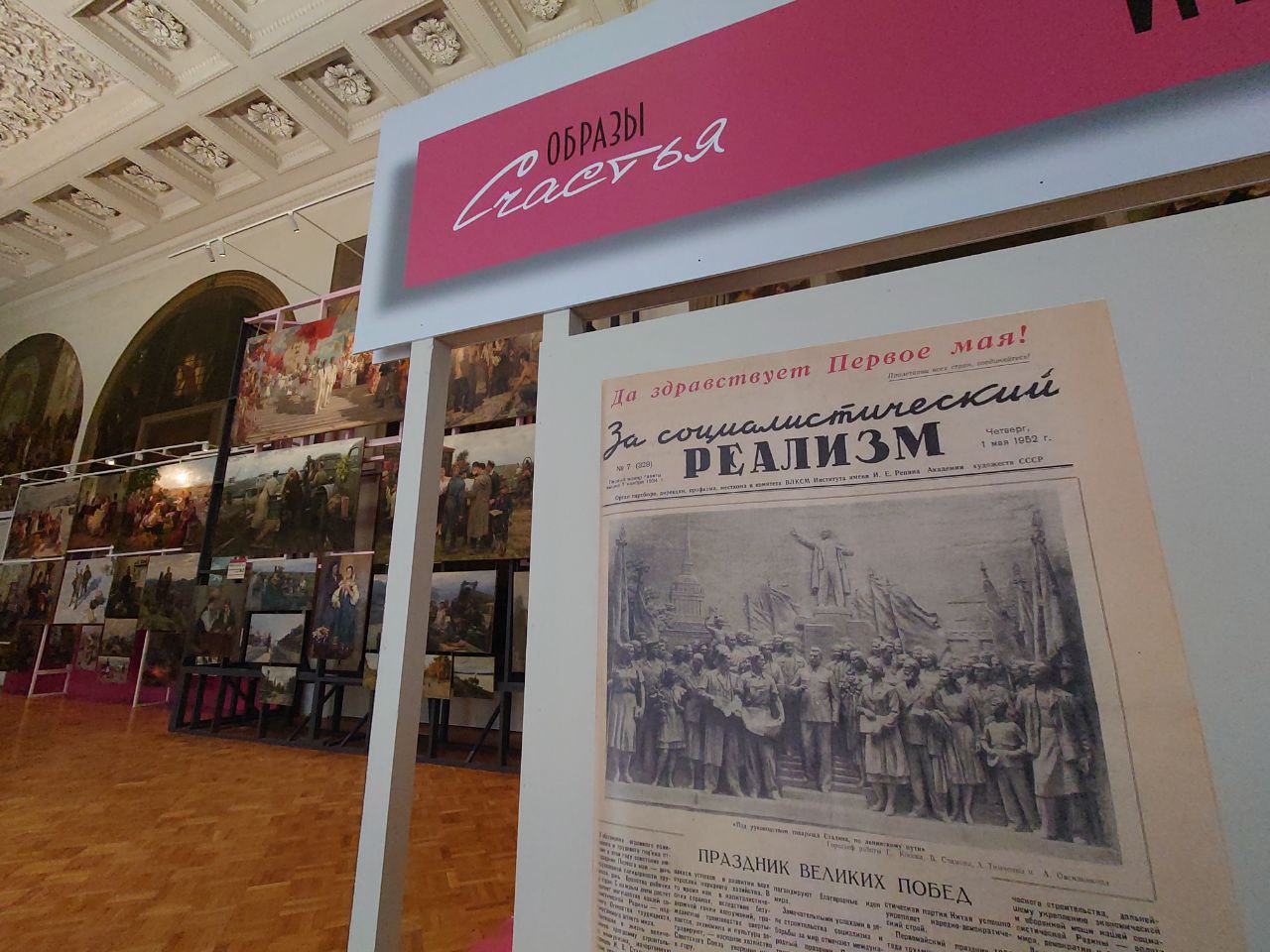
"Happiness" is framed in such a way that it is difficult to immediately understand – this is a very bold trolling or the organizers are absolutely serious. It seems to be the second option. This refers to the post-war happiness from the world, and we are also talking about the Second World War – the main war of the Russian patriotic myth. On the bright pink stands there are educational papers of the 50s and 60s of the last century, in the center of the hall there are reprints of spreads of the newspaper For Socialist Realism with quotes from students:
“We want peace! We need peace in order to build a communist society in which there will be an abundance of material values and spiritual culture. We, young artists, will fight for peace, for the friendship of peoples with our creativity. <…> War is hated by the peoples. <…> Not a single nation experienced such suffering in the last war as the Soviet people suffered. There must be no more wars! The most staunch supporters of peace, we unanimously support the Appeal of the World Peace Council. We are sure that the world will win the war, because the banner of this struggle is Stalin!”
And:
“Peoples have changed! The bitter experience of past wars showed them that wars bring only suffering and poverty to the working masses. The people want peace. The movement for peace, for democracy meets their most vital interests and aspirations.”
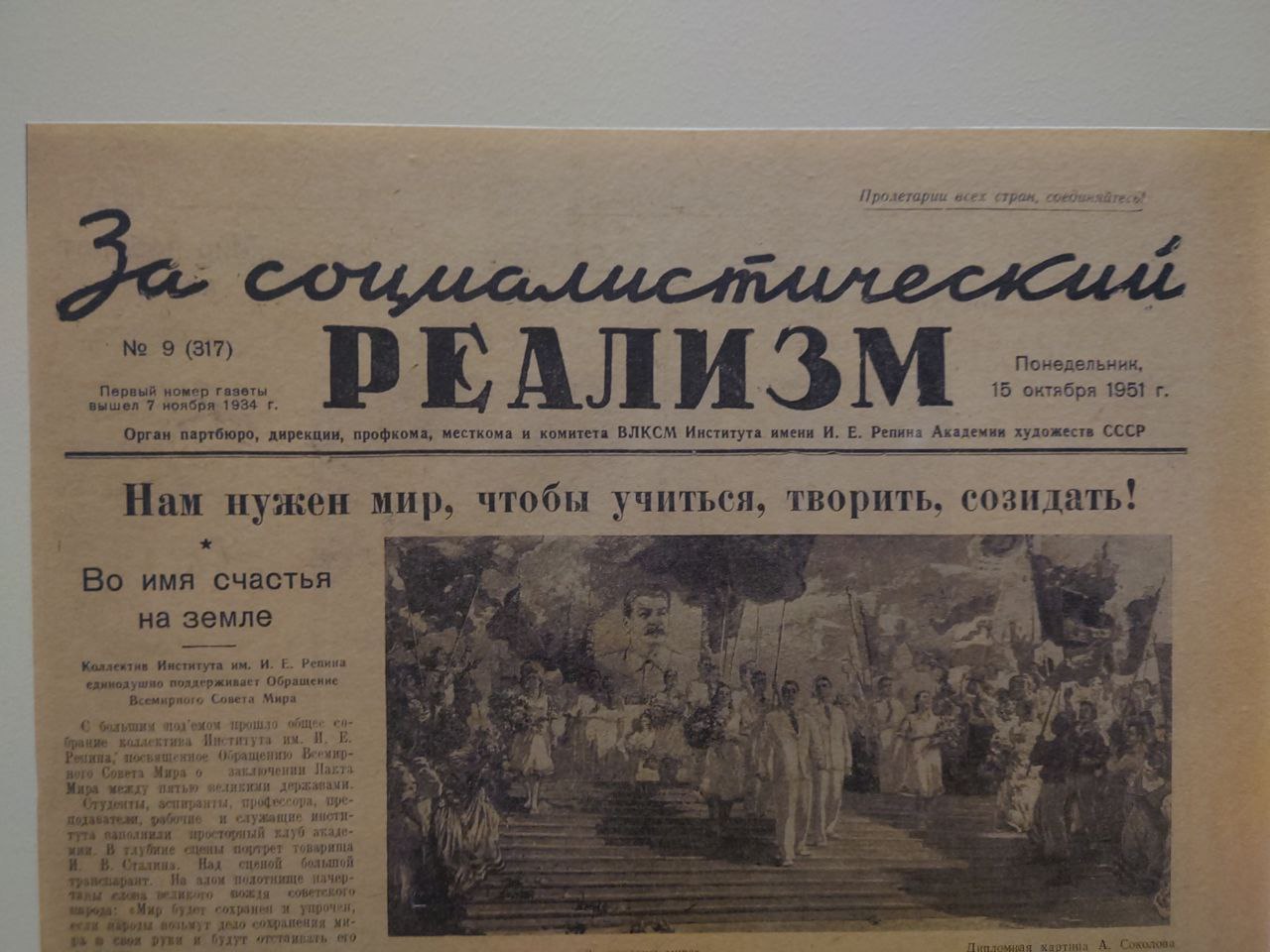


In general, “Images of Happiness” is student work from the Academy’s funds, not a bad painting in itself, which depends on curatorial decisions. In 2014, the Academy already had a project " After the war " – they showed the same things, but with different accents (for example, there was a section "Propaganda"). In January 2023, in addition to Images of Happiness, the same Academy Museum will show an Industrial Portrait of Donbass.
In a small hall with columns and a marble Catherine II – the work of the "Union of Artists of the Donetsk People's Republic", "Union of Artists of the Luhansk People's Republic" and poor reproductions of paintings from the Donetsk Republican Art Museum. The guest book contains touching handwritten lines (“We are with you, Donbass!”). The quality of the work is much inferior to "Images of Happiness", and low-quality reproductions in a project on a topic that seems to be of national importance look cheap. It’s even a shame for the narrative – Soviet propaganda approached the matter more thoroughly, at the level of technology, Soviet academic painting (as well as sculpture) is good. This quality allows her to rightfully occupy places in museums, leaving interpretations for curators and spectators.
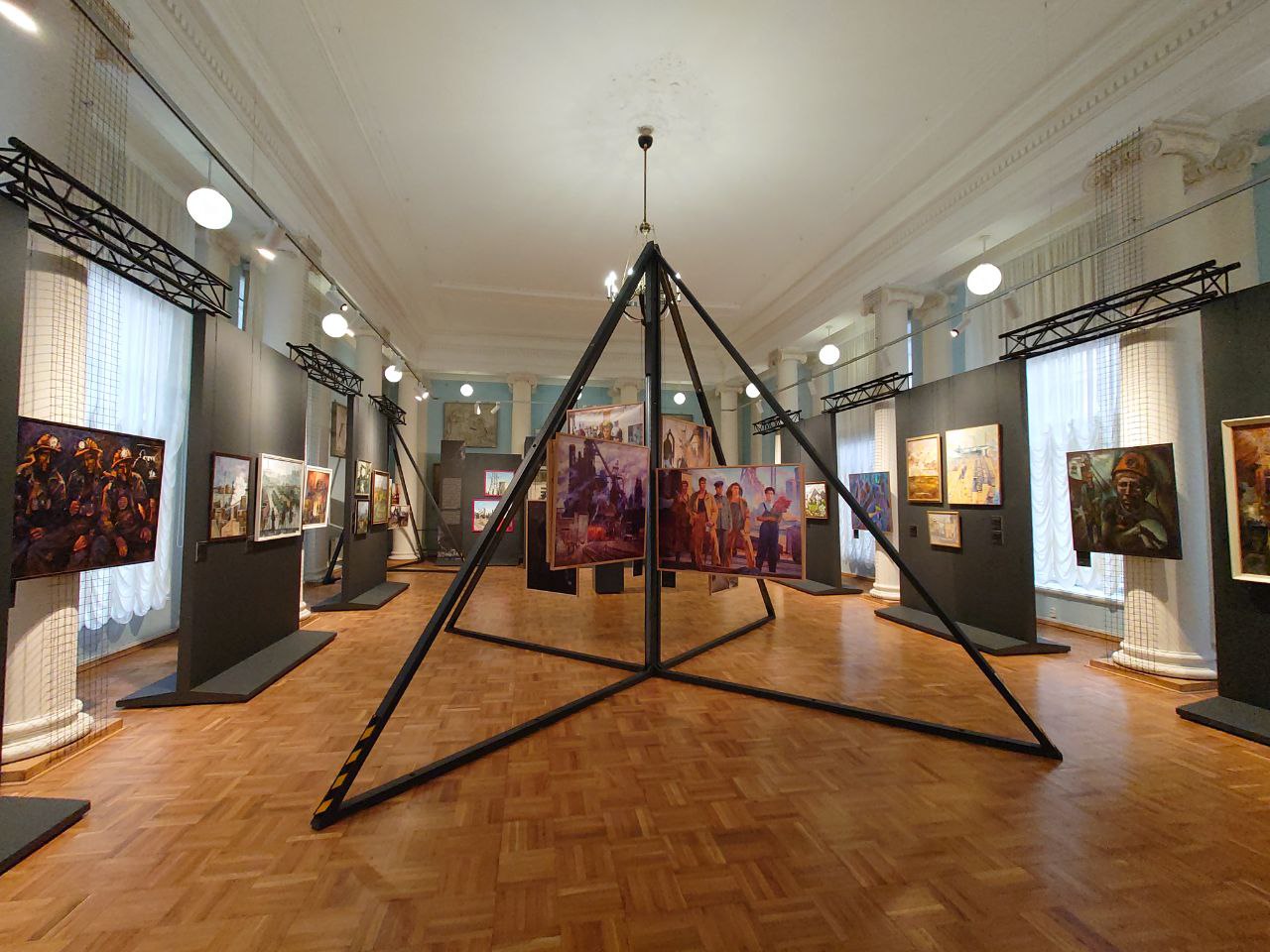

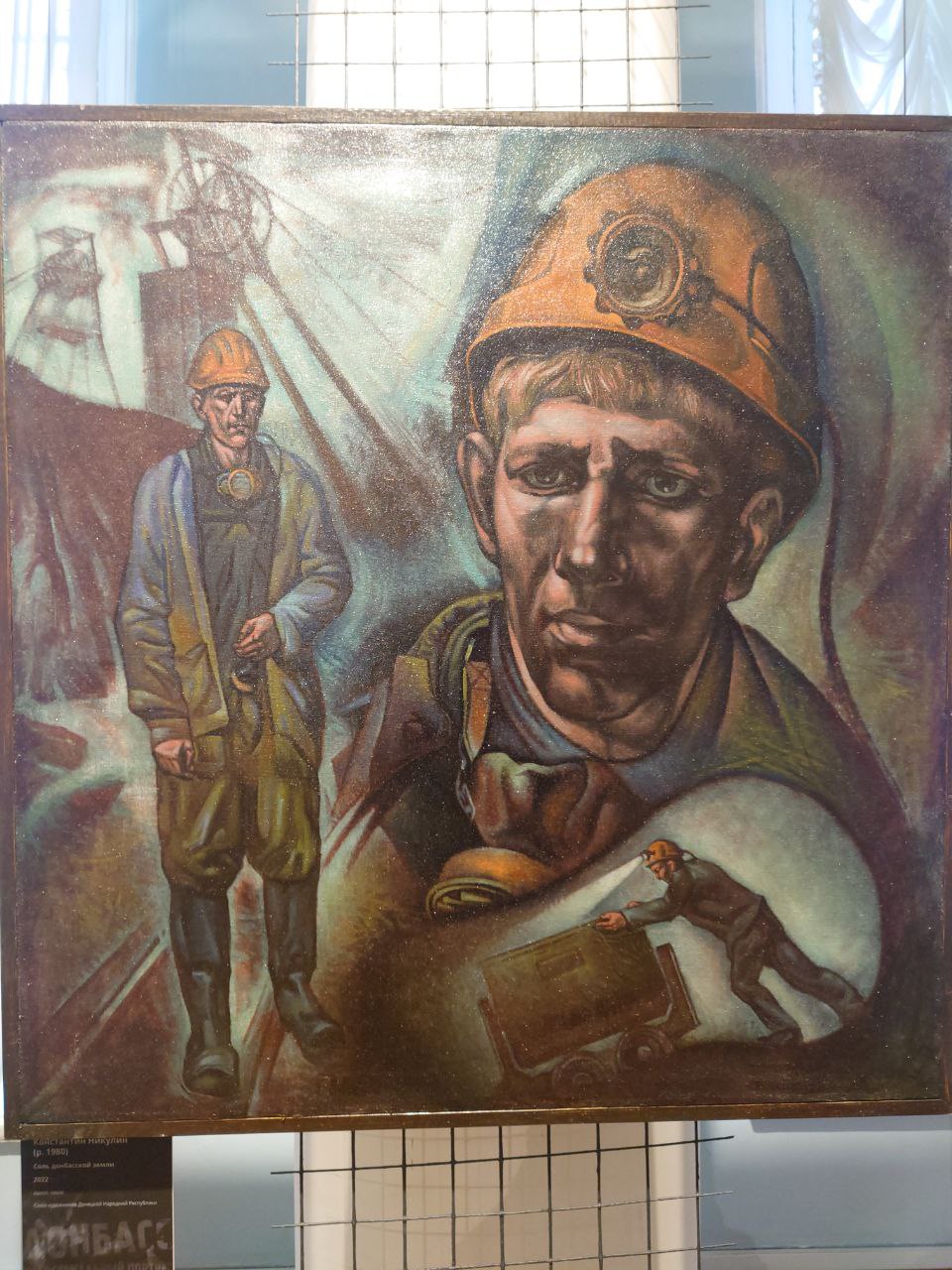
Perhaps that is why the current projects seem to be the revenge of the "official" Soviet art after the seemingly victory of the "unofficial" art with the collapse of the USSR. This is the "DK USSR" in the Moscow Manege , and the same "Images of Happiness". Current art processes do not put technology at the forefront – strictly speaking, in the second half of the 20th century, in many regions of the world, technology was not as important as in the Soviet system of art education. And in 2023, the Russian audience was left with what the country lacks in abundance – figurative realistic painting, which now, apparently, will be shown again and again in various combinations, sometimes diluted with the "New Order" and poor reproductions of paintings, the originals of which are registered In Donesk.
The aforementioned “Pictures of military life” in the Russian Museum look reserved against the background of the projects listed. This is a pre-war exhibition, she even managed to go on tour in the Spanish branch of the museum in Malaga. And this is a diptych – there is an exhibition dedicated to "Pictures of Peaceful Life". In the guest book for the exhibition in the Russian Museum – the words "No to war!" and "Damn the war!".

According to the "Pictures of military life" it is noticeable that they do not add up to the main "patriotic" idea – imperial painting is too different from Soviet, and early Soviet – from post-war. At the exhibition, it can be concluded that the defense of Sevastopol is an important historical mission (“In the besieged Sevastopol” (1862) by Konstantin Filippov), if you die, then by Russian patriots (the painting “The execution of Russian patriots by the French in Moscow in 1812” (1813) by Mikhail Tikhonov ), rebels are bad (Pugachev the tyrant and his bestial supporters in the painting by Vasily Perov “Pugachev's Court” (1879)). And then – the pacifist Vereshchagin, then the paintings on the theme of the Civil War (the work of Alexander Deineka "On Interrogation. The Headquarters of the Whites" (1933). Paintings created in besieged Leningrad do not look like propaganda at all, and post-war paintings against the backdrop of the militant frenzy of Russian TV – an example of compassion and humanism.All this is also "official" art, but it does not compete with patriotism in the current understanding of the Russian authorities.
Before the war, projects with ideological kicks could seem like meta-irony or trolling (like the exhibition of the "art of stagnation" "Forever" in the Tretyakov Gallery). But from 2023 until an indefinite time, the Russian audience, apparently, is doomed to watch, at best, academic and realistic painting under the dressing of fragmentary ideology, at worst, trophies under fake quotes and printouts about “Nazi drug addicts”.


